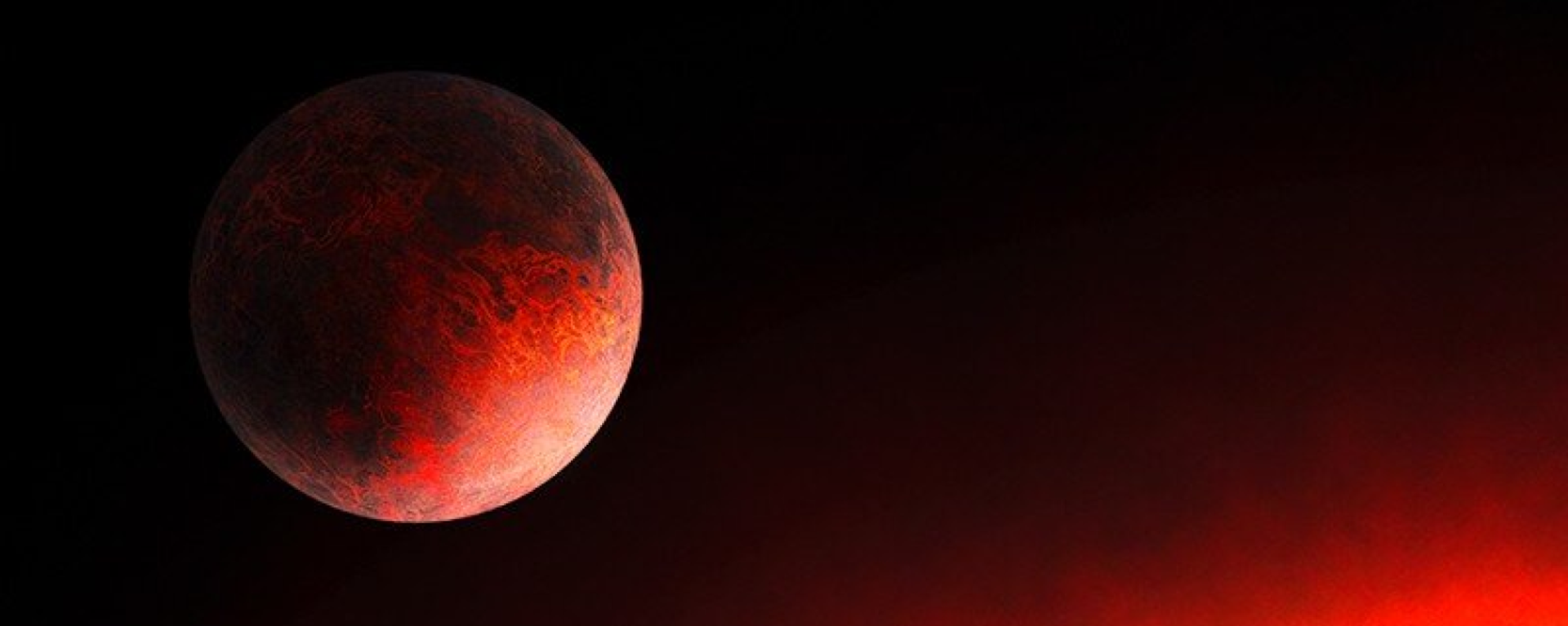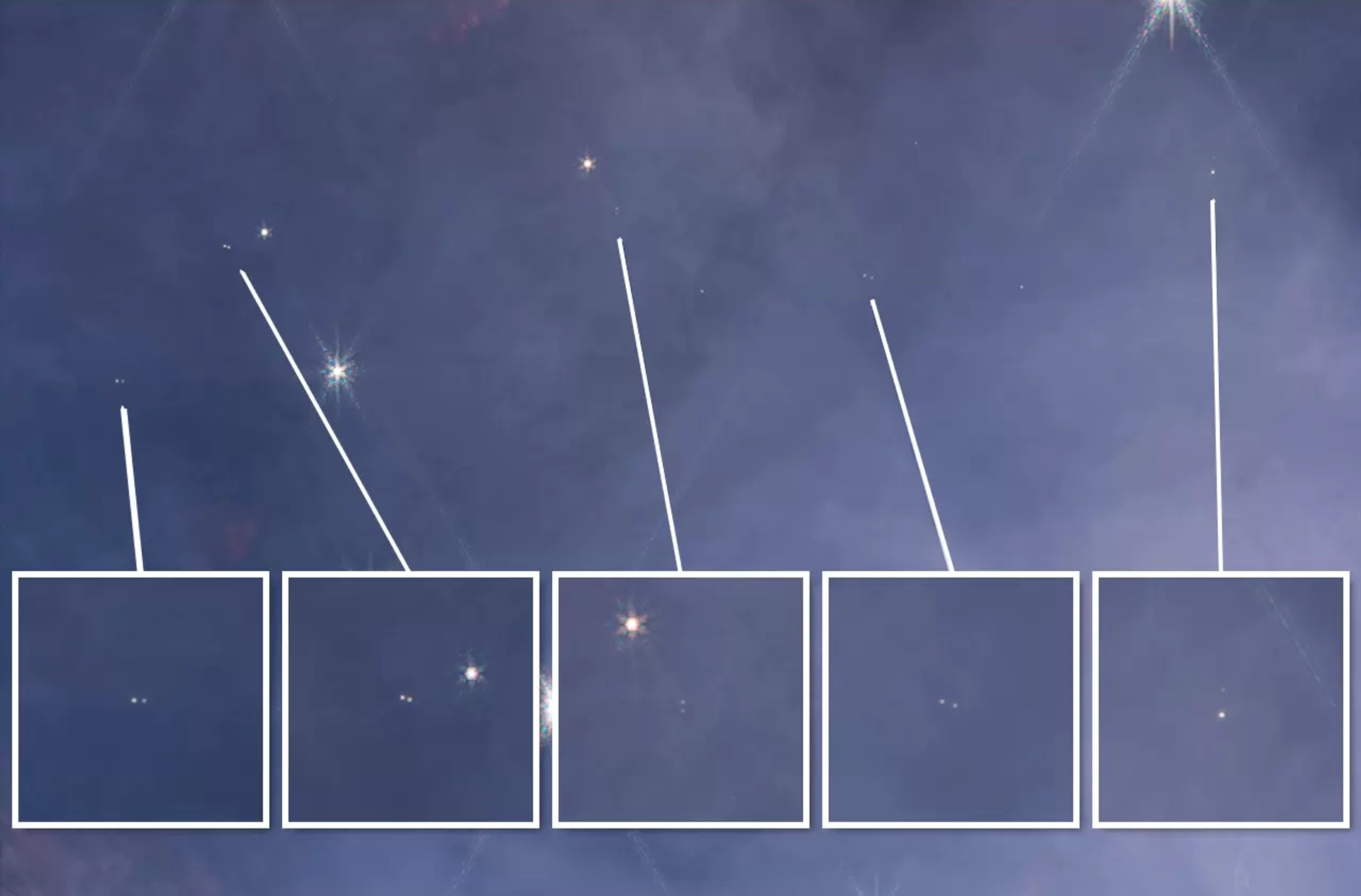https://sputnikglobe.com/20231002/photos-jwst-spots-dozens-of-rogue-jupiter-sized-planets-in-orion-nebula-close-up-1113861100.html
Photos: JWST Spots Dozens of Rogue Jupiter-Sized Planets in Orion Nebula Close-Up
Photos: JWST Spots Dozens of Rogue Jupiter-Sized Planets in Orion Nebula Close-Up
Sputnik International
A stunning new discovery has been made using the James Webb Space Telescope: the orbital observatory has spotted dozens of planets roaming freely in the Orion nebula, unconnected to any star.
2023-10-02T15:37+0000
2023-10-02T15:37+0000
2023-10-02T15:37+0000
beyond politics
european space agency (esa)
james webb space telescope (jwst)
orion
planet
rogues
science & tech
jupiter
earth
https://cdn1.img.sputnikglobe.com/img/07e7/0a/02/1113861605_0:0:2048:1153_1920x0_80_0_0_0f146e3fa362cce44e4f68ef12614ee3.png
Using the JWST, the scientists say they have found at least 40 pairs of Jupiter-sized objects freely floating about the Orion nebula, an area rich in new star formation about 1,350 light-years from Earth, so named because it sits within the constellation Orion in Earth’s night sky.Some of the objects are floating by themselves, others seem to be orbiting each other - but not a star. Bereft of a better explanation, the scientists have dubbed them Jupiter Mass Binary Objects, or "JuMBOs,” and say they might be a completely new category of interstellar object.According to reports, they explored the idea that the JuMBOs might be brown dwarfs or “hot Jupiters,” as they are sometimes called, which are a type of failed star that is larger than Jupiter but not large enough to begin fusing hydrogen into helium - the explosive reaction that makes stars shine so brightly. Brown dwarfs can get very hot and glow a dull brown color due to lesser kinds of fusion, such as deuterium. But the objects observed by the JWST are too cool and too small to be brown dwarfs, with some even being smaller than Jupiter.Mark McCaughrean, a senior science adviser for the ESA who led the study, told British media they think the planets might have been ejected from the star systems in which they formed, rather than having formed alone.Or to put it another way ESA scientist Samuel Pearson said simply that the objects they’ve found “shouldn’t exist,” whether they formed independently or were ejected from star systems. Especially puzzling is why so many have paired together after being supposedly ejected.“There’s something wrong with either our understanding of planet formation, star formation - or both,” he added.Their work has been published privately online and submitted to the journal Astronomy and Astrophysics, but has not yet been peer reviewed or accepted for publication.The ESA has also published the entire image of the Orion nebula for the public to marvel at or scrutinize to their heart’s content.
https://sputnikglobe.com/20230921/metalhead-earth-sized-exoplanet-made-mainly-of-iron-likely-remnant-core-of-much-larger-world-1113569906.html
jupiter
earth
Sputnik International
feedback@sputniknews.com
+74956456601
MIA „Rossiya Segodnya“
2023
News
en_EN
Sputnik International
feedback@sputniknews.com
+74956456601
MIA „Rossiya Segodnya“
Sputnik International
feedback@sputniknews.com
+74956456601
MIA „Rossiya Segodnya“
orion nebula; james webb space telescope; planets; rogue; jumbos; astronomy
orion nebula; james webb space telescope; planets; rogue; jumbos; astronomy
Photos: JWST Spots Dozens of Rogue Jupiter-Sized Planets in Orion Nebula Close-Up
A stunning new discovery has been made using the James Webb Space Telescope (JSWT), the most powerful telescope ever built by humans. The orbital observatory has spotted dozens of planets roaming freely in the Orion nebula, unconnected to any star.
Using the JWST, the scientists say they have found at least 40 pairs of Jupiter-sized objects freely floating about the Orion nebula, an area rich in new star formation about 1,350 light-years from Earth, so named because it sits within the constellation Orion in Earth’s night sky.
Some of the objects are floating by themselves, others seem to be orbiting each other - but not a star. Bereft of a better explanation, the scientists have dubbed them Jupiter Mass Binary Objects, or "JuMBOs,” and say they might be a completely new category of interstellar object.
According to reports, they explored the idea that the JuMBOs might be brown dwarfs or “hot Jupiters,” as they are sometimes called, which are
a type of failed star that is larger than Jupiter but not large enough to begin fusing hydrogen into helium - the explosive reaction that makes stars shine so brightly. Brown dwarfs can get very hot and glow a dull brown color due to lesser kinds of fusion, such as deuterium. But the objects observed by the JWST are too cool and too small to be brown dwarfs, with some even being smaller than Jupiter.
Mark McCaughrean, a senior science adviser for the ESA who led the study, told British media they think the planets might have been ejected from the star systems in which they formed, rather than having formed alone.
"Gas physics suggests you shouldn't be able to make objects with the mass of Jupiter on their own, and we know single planets can get kicked out from star systems,” McCaughrean said. “But how do you kick out pairs of these things together? Right now, we don't have an answer. It's one for the theoreticians.”

21 September 2023, 21:02 GMT
Or to put it another way ESA scientist Samuel Pearson said simply that the objects they’ve found “shouldn’t exist,” whether they formed independently or were ejected from star systems. Especially puzzling is why so many have paired together after being supposedly ejected.
“It’s like kicking a cup of tea across a room and having all the tea land in the teacup,” Pearson quipped. “And then doing that 42 times.”
“There’s something wrong with either our understanding of planet formation, star formation - or both,” he added.
Their work has been
published privately online and submitted to the journal Astronomy and Astrophysics, but has not yet been peer reviewed or accepted for publication.The ESA has also
published the entire image of the Orion nebula for the public to marvel at or scrutinize to their heart’s content.

![Orion Nebula in NIRCam long-wavelength [infrared] channel, imaged by James Webb Space Telescope (JWST) Orion Nebula in NIRCam long-wavelength [infrared] channel, imaged by James Webb Space Telescope (JWST) - Sputnik International, 1920, 02.10.2023](https://cdn1.img.sputnikglobe.com/img/07e7/0a/02/1113861605_0:0:2048:1394_1920x0_80_0_0_21142e840f17f9c17af3f994ad398e7a.png)

![Orion Nebula in NIRCam long-wavelength [infrared] channel, imaged by James Webb Space Telescope (JWST) Orion Nebula in NIRCam long-wavelength [infrared] channel, imaged by James Webb Space Telescope (JWST) - Sputnik International, 1920, 02.10.2023](https://cdn1.img.sputnikglobe.com/img/07e7/0a/02/1113861605_0:0:2048:1153_1920x0_80_0_0_0f146e3fa362cce44e4f68ef12614ee3.png)

